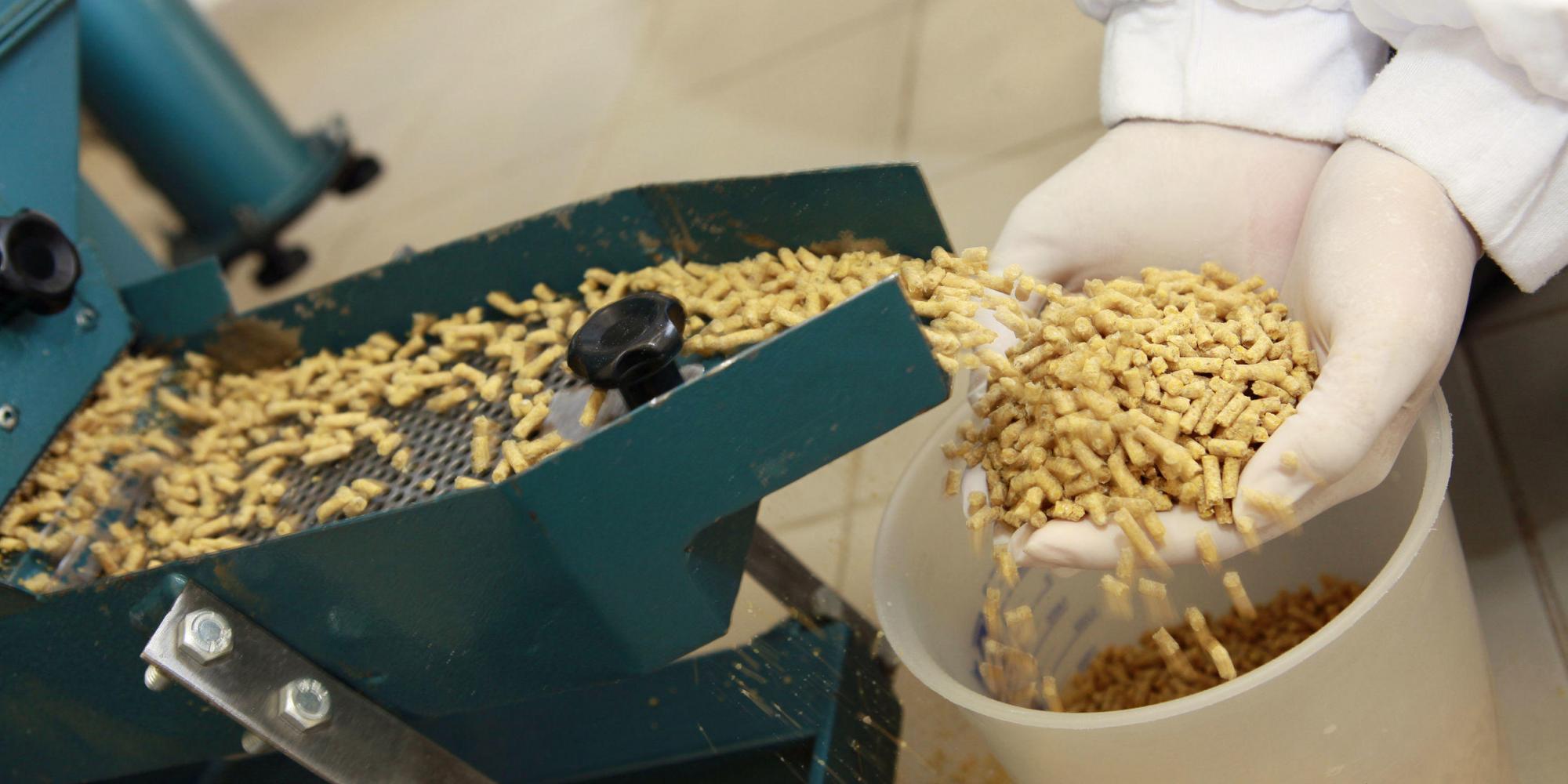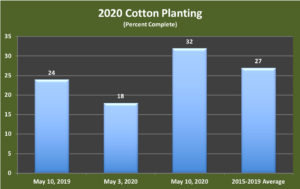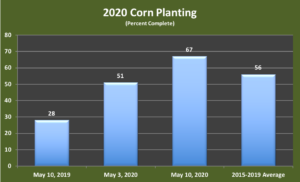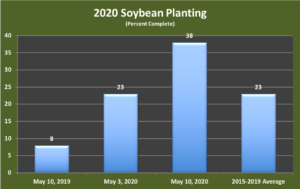11.21.2025
Sausage casings bulletin, November 21, 2025

...

Planting progress continued at a rapid pace in much of the Midwestern and Plains states as the number of days suitable for field work remained favorable. Sixty-seven percent of the corn crop is planted, up from 51 percent last week and 11 points over the five-year average of 56 percent. Michigan made the most progress, planting more than a quarter of the crop thanks to six suitable field workdays. Iowa is the furthest along, having planted 91 percent and Minnesota is the furthest ahead of their average planting pace at 32 points over. On the flip side, North Dakota is the furthest behind, trailing their average pace by 31 points. Topsoil moisture is adequate throughout the Midwest but is beginning to a concern in some of the Plains states.
Soybean planting accelerated, climbing 15 points to 38 percent complete. The planting pace is 15 points over average, about a week ahead of schedule, due to producers taking advantage of the favorable weather. Iowa made the most progress, planting 25 percent of the crop and is also the furthest along at 71 percent complete. Iowa is also 47 points over its average planting pace, making the Hawkeye State the most efficient soybean planting state so far this season. North Dakota is struggling and 13 points below average with only four percent of the crop planted.
Peanut planting increased its planting pace but still fell further behind average. Thirteen percent of the crop was planted, up from eight percent but now trailing the five-year average by five points. Alabama made the most progress, planting 20 percent of the crop and is now 35 percent complete. Florida is furthest along with 40 percent of the crop planted but trails its average pace by two points. Oklahoma planted six percent of the crop, registering their first planting progress of the year. Oklahoma is the furthest behind average, trailing the average pace by 31 points. Peanut planting has been slow across much of the Southeast, with six of eight reporting states trailing the average pace.
Cotton planting shifted to a higher gear as 14 percent of the crop was planted over the past week, up from the five percent the week prior. Overall, 32 percent of the crop is planted, five points over the average pace of 27 percent. Alabama made the most progress, planting 20 percent of its crop. Arizona is also the furthest along at 85 percent planted and Texas is the furthest ahead of schedule, operating at 17 points over its historic average. Missouri is the furthest behind, having planted only 10 percent of its crop and trailing its five-year average by 53 percent. Eleven out the 15 reporting states trail their respective average planting pace.
Spring wheat planting continues to suffer from its slow weather-related start. Planting stands at 42 percent complete, up 13 points from last week but trailing the five-year average of 63 percent. Minnesota made the most progress, planting 19 percent of the crop but Minnesota also trails their average planting pace by 27 points. Both Idaho and Washington are nine points over their average planting pace, and the only two states ahead of average. North Dakota is the furthest behind with 27 percent of the crop planted and trailing their average by 29 points.
The condition of the winter wheat crop declined over the past week. Fields rated good to excellent are at 53 percent, while those rated poor to very poor are at 16 percent. Condition ratings worsened by two points in the good to excellent category and in the poor to very poor category over the past week. Conditions compare unfavorable to last season where 64 percent of the crop was rated good to excellent and eight percent was seen as poor to very poor. Forty-four percent of the winter wheat crop has headed, up 12 points from last week but six points behind the five-year average of 50 percent.


